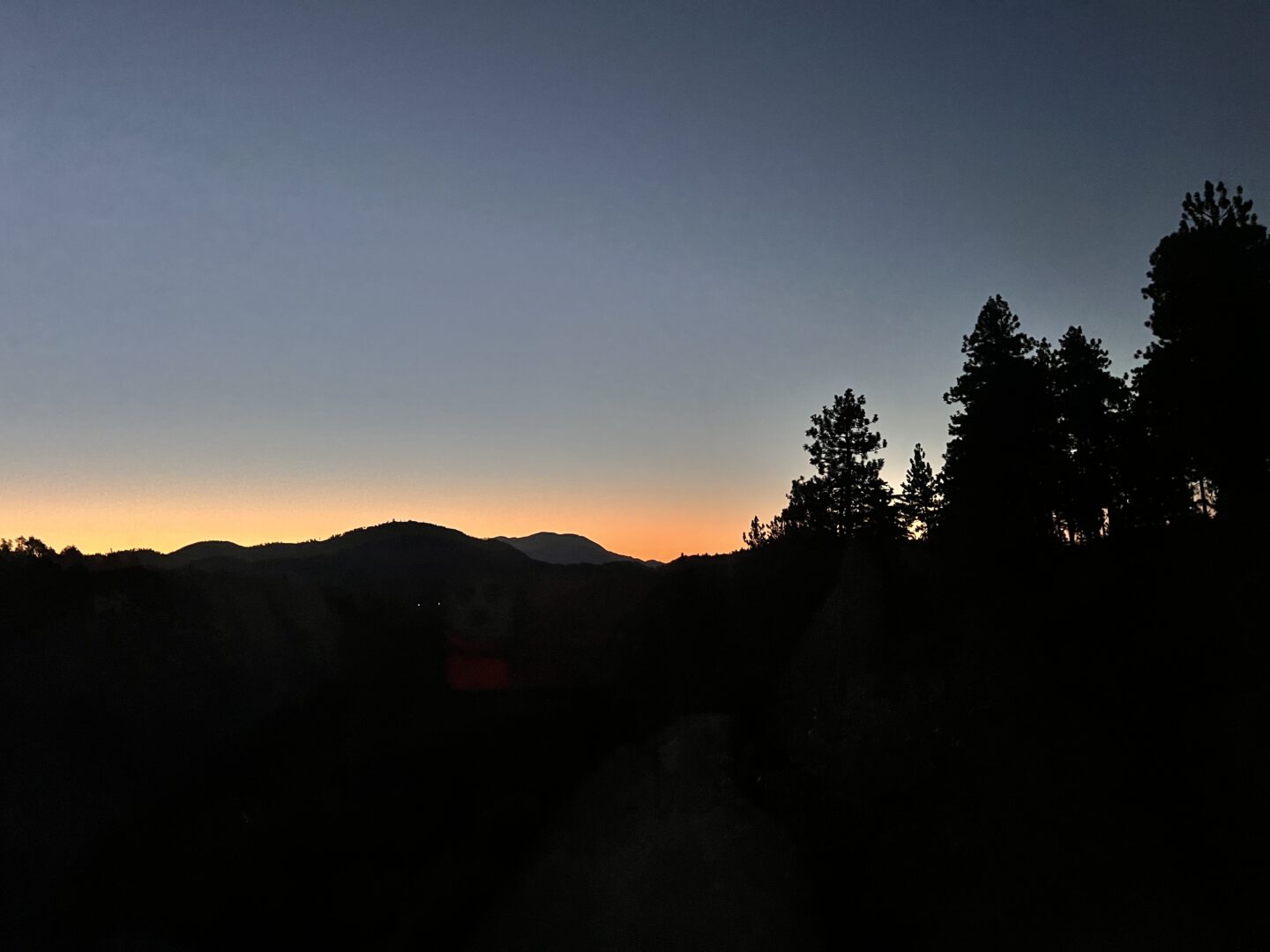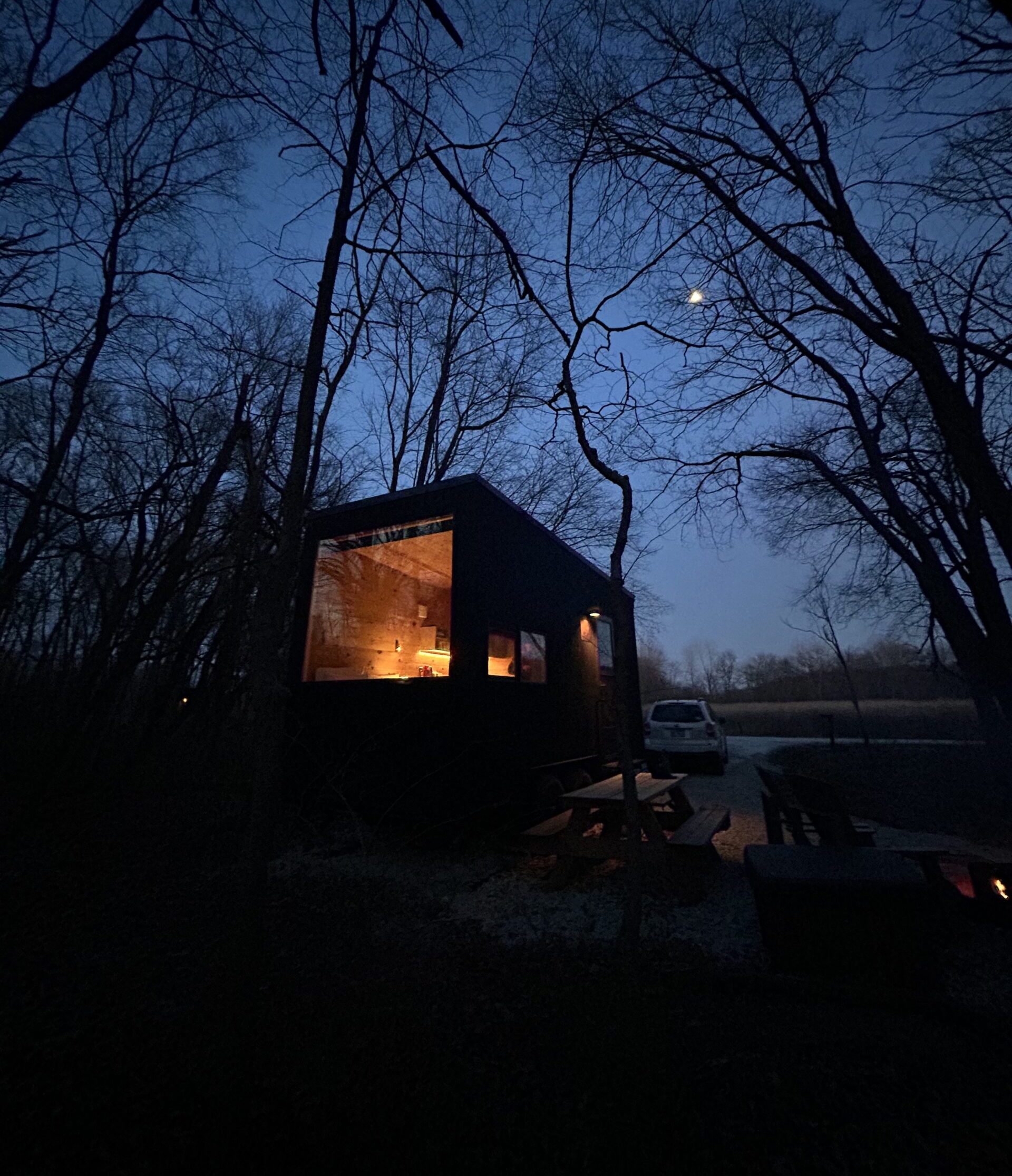One consistent piece of feedback we receive from our guests is that our cabins are the perfect place, far from the light pollution of the city, to see the stars and constellations. Here’s what you can look forward to seeing in the sky this month on your next escape to nature.
April
Full Moon
On April 13th, bask in the brightness of April’s Full Moon, also known as the Pink Moon, as it is tied to the first spring blooms of wild ground phlox, often called moss pink. This Pink Moon will be at its fullest at 00:24 UTC, and since it is the first full moon after the Spring Equinox, signifies the Spring season is in full swing, marking the return of life after Winter.
Mercury at Greatest Western Elongation
On April 21st, catch Mercury at its greatest western elongation from the Sun, making the best time to spot the elusive planet. At its furthest distance from the Sun’s glare, look low in the eastern sky before sunrise to spot the pinkish planet before the Sun emerges above the horizon. Since Mercury orbits so closely to the Sun, it is most often in the sky at the same time as the Sun, making it rarely visible in the night sky.
Lyrids Meteor Shower
The night of April 22nd and early morning of April 23rd are the best time to view this annual meteor shower, which occurs each year between April 16th and April 25th. At its peak, the shower produces about twenty meteors per hour. For the best show, look to the constellation Lyra, from where meteors will radiate, however, the bright dust trails that last several seconds each, can be seen anywhere in the night sky. The thin waning crescent moon will pose little obstruction to view this celestial event.
New Moon
Experience the darkness of the new moon on April 27th, when far-off galaxies and star clusters are easier to spot. The new moon phase is a time for introspection and new beginnings. Use this Spring new moon as a reset — escaping to nature solo, or with loved ones and friends — to set intentions, build new habits, and reflect on recent growth. It’s written in the stars.

March
Year of the Snake
As we settle into the Lunar New Year, the Year of the Snake is a time of transformation, wisdom, and renewal. Snakes are often seen as symbols of rebirth and adaptability, making this the perfect time to reflect and embrace the changing seasons. Use your escape to nature this month as an opportunity to connect with these themes and find clarity in the stillness of the woods.
Total Lunar Eclipse
Mark your calendars for the spectacular total lunar eclipse on March 14th. During this event, the Moon will pass entirely through the Earth’s umbra (dark shadow), turning a mesmerizing rusty or blood-red color. Visible across North America, Mexico, Central America, and South America, this celestial phenomenon offers a rare and stunning opportunity to witness the Moon in a whole new light. Grab a cozy blanket, head outdoors, and prepare to be awed by this lunar spectacle.
March Equinox
At 08:58 UTC on March 20th, we welcome the March equinox. This day marks a moment of balance, where the Sun shines directly on the equator, resulting in nearly equal parts daylight and darkness worldwide. In the Northern Hemisphere, it’s the first day of spring—a time of renewal, growth, and budding blooms. For our friends in the Southern Hemisphere, it signals the first day of fall. Take this opportunity to reflect on balance in your own life as the natural world transitions into a new season.
New Moon
On March 29th, the Moon will align with the Sun, creating a new moon phase. With the absence of moonlight, this is the perfect night for stargazing. The sky will be its darkest, allowing faint celestial objects—like distant galaxies and star clusters—to shine brilliantly. Whether you bring a telescope or simply lie back and enjoy the show, the New Moon is a great reminder of the beauty found in nature’s quiet moments.

February
Full Moon
On February 12th at 13:55 UTC, the Full Moon will illuminate the night sky in all its glory. Known as the Snow Moon by early Native American tribes, this lunar event reflects the harshest winter conditions, as February often brought heavy snowfall. Some tribes also called it the Hunger Moon due to the difficulty of hunting during these cold, unforgiving months. Spend a quiet evening by the cabin window, letting the moonlight reflect off the snowy landscape for a truly magical winter scene.
Saturn in Conjunction with the Sun
On February 15th, Saturn will reach conjunction with the Sun. This means the ringed planet will pass directly behind the Sun from Earth’s perspective, rendering it invisible. Although we can’t observe Saturn during this time, it’s a good opportunity to reflect on the wonders of our solar system and prepare for its return to the night sky in the months ahead.
Venus at Greatest Eastern Elongation
At its greatest eastern elongation on February 20th, Venus will be at its farthest point from the Sun in the evening sky. This makes it the perfect time to catch the dazzling “Evening Star.” Look west just after sunset to see Venus shining brightly, outshining almost every other celestial object. It’s a sight you won’t want to miss while enjoying your escape into nature.
New Moon
On February 28th, the Moon will enter its new phase at 00:46 UTC. With the Moon completely hidden from view, the sky will be at its darkest—an ideal time for stargazing. Use this opportunity to spot faint celestial objects like galaxies and star clusters, free from the interference of moonlight. Find a spot away from cabin lights, bundle up, and let the infinite expanse of the universe leave you in awe.

January
Quadrantids Meteor Shower
The Quadrantids meteor shower peaks on the night of January 3rd and the early morning of January 4th, offering one of the first celestial shows of the new year. Known for its above-average activity, the Quadrantids can produce up to 40 meteors per hour at its peak. This shower is thought to originate from dust grains left behind by the extinct comet 2003 EH1, discovered in 2003. With a crescent moon setting early in the evening, skies will be dark, providing excellent conditions for meteor viewing. For the best experience, find a dark location after midnight. The meteors will radiate from the constellation Bootes but can appear anywhere in the sky.
Venus at Greatest Eastern Elongation
On January 10th, Venus will reach its Greatest Eastern Elongation, at 47.2 degrees from the Sun. This is the best time to view Venus, as it will be at its highest point above the horizon in the evening sky. Look for the bright “Evening Star” shining in the western sky after sunset. Venus will be a stunning sight, easily visible even without a telescope, making it a treat for both amateur astronomers and casual stargazers.
Full Moon
The Full Moon on January 13th will occur at 22:28 UTC, lighting up the night sky with its fully illuminated face. Known as the Wolf Moon by early Native American tribes, this full moon signifies the time of year when hungry wolf packs were heard howling outside villages. It is also referred to as the Old Moon and the Moon After Yule. The bright moonlight provides a wonderful opportunity to observe the moon’s detailed surface features, such as craters, valleys, and mountain ranges. It’s an ideal time for moonlit walks and nighttime photography.
Mars at Opposition
January 16th brings Mars to Opposition, marking its closest approach to Earth this year. Fully illuminated by the Sun, the red planet will be brighter than at any other time and visible all night long. This is the best opportunity to view and photograph Mars. With a medium-sized telescope, you can observe some of the planet’s dark surface features, like polar ice caps and dark plains. The reddish-orange glow of Mars will be a stunning sight, making this event a highlight for both seasoned astronomers and casual observers.
New Moon
On January 29th, the New Moon will occur at 12:37 UTC. During this phase, the Moon is positioned between the Earth and the Sun, making it invisible in the night sky. This absence of moonlight offers the darkest skies of the month, perfect for observing faint celestial objects like distant galaxies, star clusters, and nebulae. Whether you’re using a telescope, binoculars, or simply your eyes, the New Moon provides the ideal conditions for deep space exploration and astrophotography.

